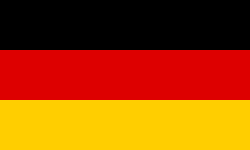The enrichment of cells and the optimization of cell separation methods play a crucial role for many researchers. Various approaches exist for sorting different cell types, and the choice of the appropriate method often depends on the cell type or cell subset. One of the faster and more cost-effective methods for separating cells is density gradient centrifugation. Based on the different densities of the individual blood components, these can be separated by one-step centrifugation with the appropriate density gradient medium. The technique is based on the fact that during centrifugation, particles with different densities have different sedimentation rates. Heavy particles such as erythrocytes sediment quickly, while lighter cells such as thrombocytes sediment more slowly. The following figure shows the distribution of the most important cell populations in blood. Erythrocytes have the highest density and platelets have the lowest density.

Figure: Blood consists mainly of the following cell populations: Thrombocytes (1), monocytes (2), lymphocytes (3), basophil granulocytes (4), neutrophil granulocytes (5), eosinophil granulocytes (6) and erythrocytes (7). The cell populations differ in density and cell number. The different densities of the cell populations can be used for enrichment using density media.
Table: Density ranges of blood cells
Typ | Blood Cell | Density (g/ml) |
1 | Thrombocytes | 1,050 - 1,070 |
2 | Monozyten | 1,060 - 1,068 |
3 | Lymphocytes | 1,067 - 1,077 |
4 | Basophilic granulocytes | 1,072 - 1,081 |
5 | Neutrophil granulocyte | 1,079 - 1,098 |
6 | Eosinophil granulocytes | 1,089 - 1,095 |
7 | Erythrocytes | 1,090 - > 1,100 |
As can be seen from the figure, the density of the cells or cell populations is a distribution around a mean value. In addition, the densities of the different cell populations overlap. The range as well as the distribution around the mean value are not fixed values. Fluctuations in density can be influenced by various factors. One of the most important factors influencing the density of the cells is hydration.
The respective density medium has a defined cut-off. All cells with a lower density than the cut-off collect on the separation medium as a layer. Cells with a higher density than the cut-off pass through the separation medium and collect at the bottom of the tube.

